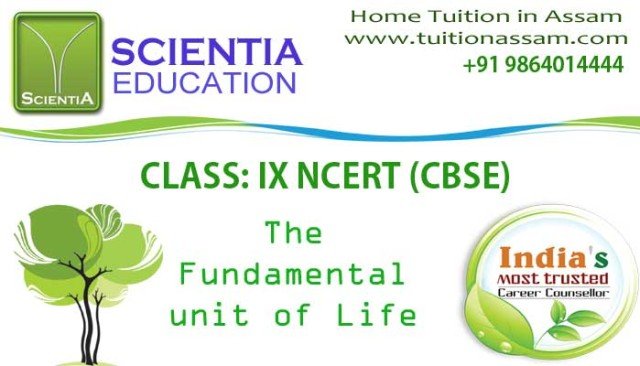
CLASS: IX NCERT (CBSE)
The Fundamental unit of Life
SUMMARY
All living organisms are made of cells. Marcello Malpighi, proposed that plants are made of tiny structural units called ‘Utricles’. Robert Hooke observed many tiny, hollow, room- like structures in a thin slice of cork through a compound microscope and called them cells.
Leeuwenhoek, in 1674, with the improved microscope, discovered free-living cells in pond water for the first time.
Robert Brown in 1831 discovered the nucleus in the cell. Purkinje in 1839 coined the term ‘protoplasm’.
Schleiden in 1838 and Schwann in 1839 proposed the cell theory that all plants and animals are composed of cells.
Rudolf Virchow in 1855 further expanded the cell theory by saying omnis cellula-e-cellula, which means all cells arise from pre-existing cells.
Cell is derived from the Latin word “cellula” which means “a little room”.
Compound microscope consists of a stage where the specimen is placed under an objective piece. The light reflected from the mirror passes onto the object. From the eye piece, a magnified image of the specimen is seen.
The microscopic examination of a plant cell includes peeling off the thin layer using forceps.Spread the peel, put a drop of water and saffranin solution to it. Small chamber-like structures called cells can be observed.
Unicellular organisms have single cells. While, multicellular organisms have multiple cells. All cells work as a team for the body through division of labour.
In Amoeba, a single cell is responsible for movement, intake of food, exchange of gases and excretion.
Prokaryotes do not have a nuclear membrane and membrane bound organelles. Eukaryotes have a membrane bound nucleus and organelles.
Structure of bacteria consists of cell wall, plasma membrane and cytoplasm. Flagella are responsible for motility. The nucleoid is a circular DNA molecule that regulates all the functions of the cell.
Difference between Prokaryotic and Eukaryotic organisms includes prokaryotic DNA is not bounded by a nuclear membrane, while eukaryotic DNA is bounded by a nuclear membrane.
Cell wall is the outermost, non-living and rigid layer, seen in a plant cell.
Plasma membrane is selectively permeable.
Diffusion is spontaneous movement of gases from a region of high concentration to a region of low concentration.
Osmosis is diffusion of solvent molecules through a semi-permeable membrane from a region of low concentration to high concentration.
If the medium surrounding the cell has a higher water concentration than the cell, called hypotonic solution, the cell gains water by osmosis and swells. If the medium has the same water concentration as the cell called isotonic solution, there is no net movement of water through the membrane and the cell stays the same size. If the medium has a lower concentration of water than the cell called hypertonic solution, the cell loses water by osmosis and then shrinks.
Plasmolysis is the shrinking of the cell away from the cell wall. Nucleus is the control centre of the cell.
Cytoplasm is the fluid living content between the plasma membrane and the nucleus.
Protoplasm is the nucleus along with the cytoplasm that makes up the living content of the cell.
Cytosol is the liquid part of the cytoplasm other than the organelles.
Endoplasmic reticulum is the protein synthesizing site of the cell.
Ribosomes are small granules that synthesize proteins.
Golgi apparatus is the site for storing and transporting proteins across the cytoplasm.
Mitochondria is the power house of the cell.
Lysosomes are known as suicide bags as these enzymes destroy injured or old organelles and foreign substances like bacteria.
Vacuoles are storage units in cells.
Chromoplasts are colored plastids and leucoplasts are colorless plastids.
Difference between Plant cell and animal cell includes size, vacuole, cell wall and chloroplasts.














